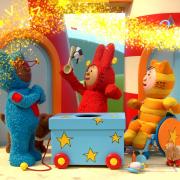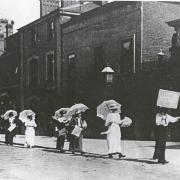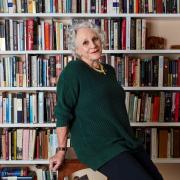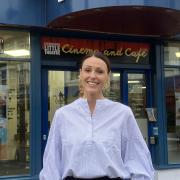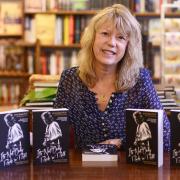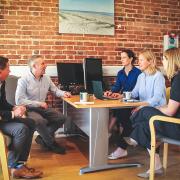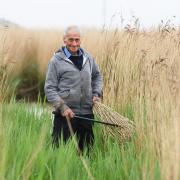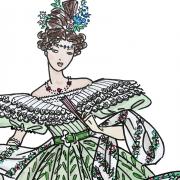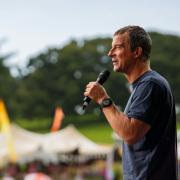Famously, the Queen adores horses – and is an expert rider and knowledgeable about everything from breeding to racing. Norfolk man Neil Graham talks about training horses for Her Majesty
Often she would simply pop in – to watch the horses out on the gallops in the morning or talk to them in them in their stables in the evening.
And once a week the Queen would telephone Neil Graham to discuss the progress of each of her beloved racehorses.
Each one had been born at Sandringham, where the west Norfolk estate is home to the royal stud, as well as to the Queen’s beloved country house.

Today Neil lives in Erpingham, near Aylsham, with his wife Diane, and is director of racing at Chelmsford Racecourse. Back in 1988 he was training horses in the United States when he took a telephone call.
“I was asked by Lord Porchester (later the Earl of Carnarvon) if I would be interested in returning to England to become assistant to Major Dick Hern, who was the Queen's trainer, with a view to succeeding him on his retiremen,” said Neil. “Major Hern had had an accident out hunting which had left him paralysed and in a wheelchair.”
Neil took over the training license at the Queen’s Berkshire stables and over the next six months won seven races for Her Majesty – and more major races for other owners whose horses were trained alongside the royal racehorses.
The Queen has loved horses all her life and her passion and expertise ranges from riding to breeding and training thoroughbred racehorses. Her lifetime of experience has included watching the progress of hundreds of horses from before they were even conceived in the Sandringham stud to the winners’ enclosures of racecourses across the country.
“The Queen visited the yard regularly, either to see the horses on the gallops in the morning or to see the horses in their stables at evening stables, and took a great personal interest in them,” said Neil. “I also telephoned her weekly to update her on plans to run the horses and their general progress.
"She was always very interested in the horses as individuals - what their characters were like, etc. As she had known the families for generations she would often remark that a certain family would be likely to demonstrate certain characteristics. I felt that this aspect was what really interested her, the animals as individuals.”



Major Hern was able to return to the Queen’s stables in 1989 and Neil went on to work as a trainer at a stables in Newmarket. But he said the highlight of his career came in 1988, while training the Queen’s horses, when he won the St Leger at Doncaster with Lady Beaverbrook’s horse Minster Son, ridden by Willie Carson. “To win a classic race is the pinnacle for any trainer,” said Neil.


He grew up in Wales and began riding as a child. By 1980 he was a pupil assistant trainer and went on to work for William Hastings-Bass, later the Earl of Huntingdon, and Ian Balding (father of television presenter Clare) before taking over at the Queen’s stables.
He moved to Norfolk while working at Newmarket and both his children (with former wife Lesley Graham who used to present Channel 4 Racing) went to school in Norwich.
He retired as a trainer in 2008 after a heart attack. “I was advised by my doctors not to go back to such a stressful lifestyle,” said Neil.
Around eight years ago Neil and Diane moved to Erpingham. “We love its proximity to both Norwich and the coast, its rural location, the peace and tranquility of the area and the beautiful rolling countryside,” said Neil. He and Diane have five grown-up children between them, and three grandchildren, but despite owning ponies and then horses for most of his life they have no horses at Erpingham – although Neil still works with horses every day. For seven years he was also chairman of the Game and Wildlife Conservation Trust in Suffolk.

He has worked for Chelmsford City Racecourse since it opened in 2015 and is now director of racing. “We race on about 60 days per year, which is a huge amount and it is my job to liaise with the various racing authorities to ensure that we stage exciting, competitive racing,” said Neil.
He also enjoys regular visits to Fakenham races.
And Diane has found herself becoming increasingly knowledgeable about horses and racing.
She met Neil when she was organising a charity event. “I was needing some advice regarding putting on a charity race day,” said Diane. “I had very limited knowledge regarding racing so we had to meet a few times before I managed to grasp the fundamentals. It was an uphill learning curve for me, but luckily he was very patient and things just raced ahead from there for us both. Now I do seem to have rather a lot of knowledge of racing which still surprises me!”
Neil still follows the fortunes of the Queen’s horses. “The Queen has had numerous winners at Chelmsford Racecourse but, unfortunately, has never be in attendance to see them!” he said.
This year Her Majesty has three horses entered in the Derby - the only flat race she has never won. Neil said: “It would be lovely for the Queen to have a runner in the Derby and absolutely amazing if she were able to win the race. To win the Derby is the pinnacle for every owner. The last time a reigning monarch won the Derby was in 1909, when King Edward VII won it with Minoru.”
The Queen’s horses
The Queen’s first horse was a Shetland pony called Peggy, given to the young Princess Elizabeth when she was just four years old.
As well as continuing to ride for pleasure into her 90s, the Queen also attended ceremonial events, such as the annual Trooping of the Colour, on horseback.
The Royal Stud is at Sandringham and Queen takes a keen interest in the racehorses bred and born here in Norfolk.
The Queen’s racing colours are purple, gold, scarlet and black.
The Royal Stud was founded in 1886 by the Queen’s great grandfather, Edward VII, when he was Prince of Wales.
The Queen has had more than 500 winning horses and is one of the most successful owners and breeders of racehorses in history. The Queen also breeds Shetland ponies at Balmoral in Scotland and fell ponies at Hampton Court, London.
The Queen herself narrated a 1974 documentary called The Queen's Race Horses: A Private View.

Fabulous Norfolk fashion twist for traditional fishermen’s favourite
Diane Graham launched Creeks Smocks during lockdown, creating and selling hand-made traditional fishermen’s smocks from her home in Erpingham.
Her sought-after patterned and plain smocks are bought by artists, sailors and gardeners, and are loved by dog-walkers too. “The pockets can store treats and other essentials,” explained Diane.
“I started making the smocks, or slops as they are locally known, after we had a holiday to Lisbon,” she said. “Neil had an old pre-loved smock and wanted a warmer and slightly smarter one for the holiday in a wool fabric.
“I made him one in herringbone tweed with extra pockets and while we were at an artisan market in Lisbon at least six people asked him where he got it!
“This sowed an idea in my mind but at the time I was still working full-time so just put it to the back of my mind. Then lockdown started and I began to make them as presents for family and friends initially.”
She now sells her smocks at Aylsham Country Market on Fridays, and at North Norfolk Crafts and Gift Shop in Bacton, Happisburgh Village Shop and Hodson and Co Cheese Room in Aylsham, as well as online (look for Creeks Smocks on Instagram.)


Diane, whose grandmother worked as a tailoress, grew up in Norfolk and worked in business administration, managed local libraries and was a fundraiser for Norfolk charity Big C before launching Creeks Smocks – with the help of her mother’s old sewing machine.
The most popular fabrics are herringbone tweeds made from Scottish wool or terracotta denim, and Diane said patterned smocks have also been selling well recently.
“Smocks are also great for layering up and are unisex and made in four sizes although if someone had specific requirements I can make a custom fit,” she said.











